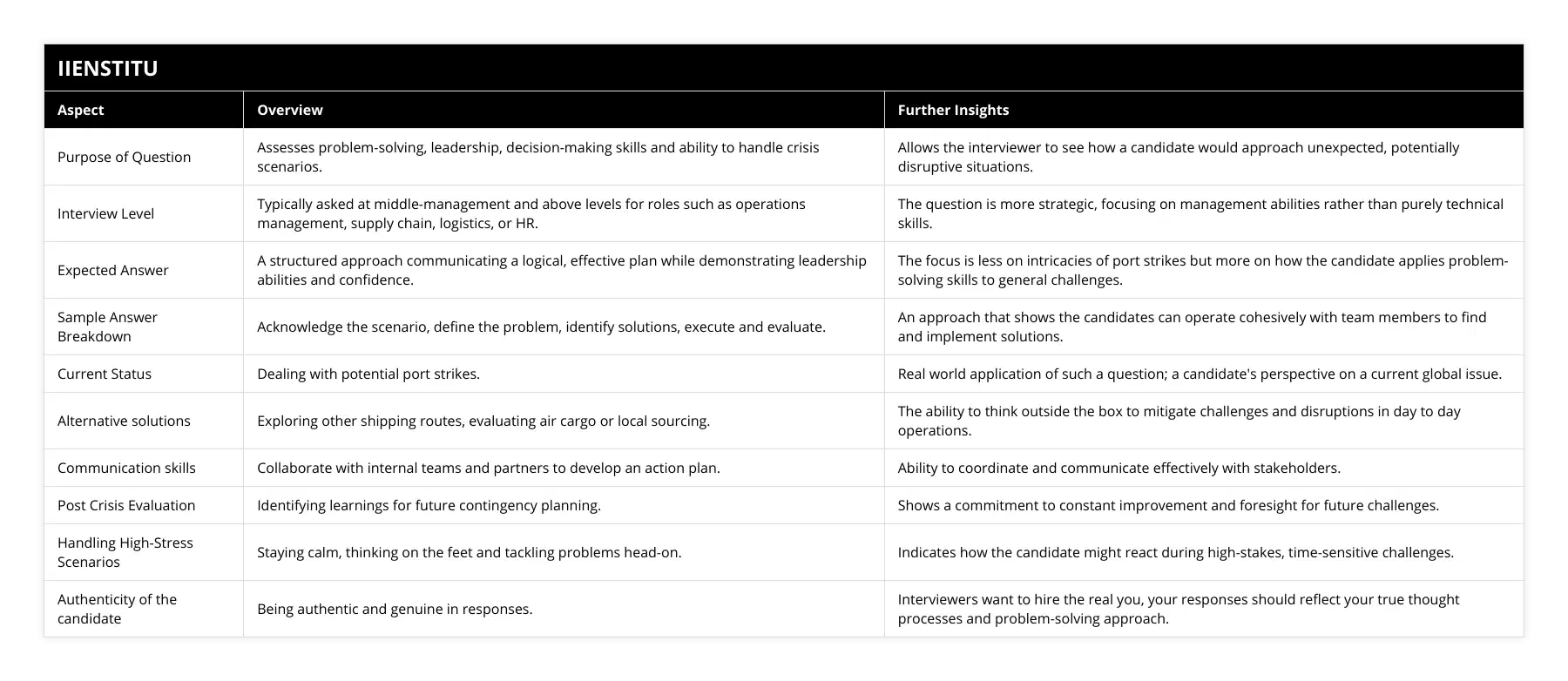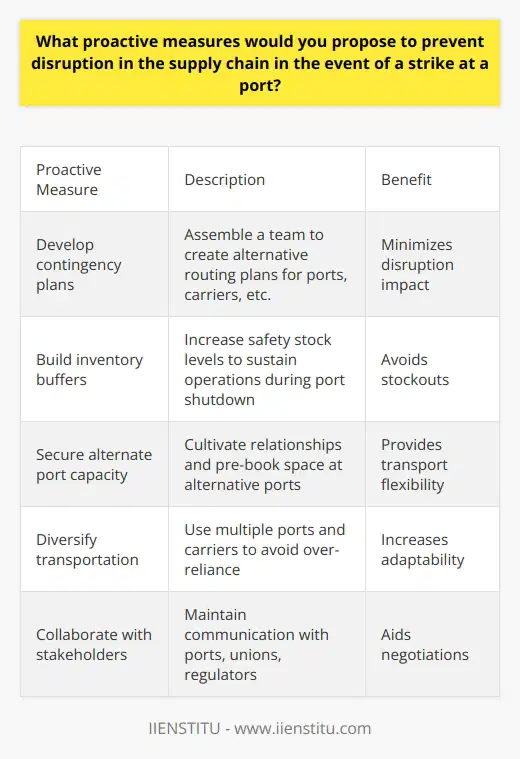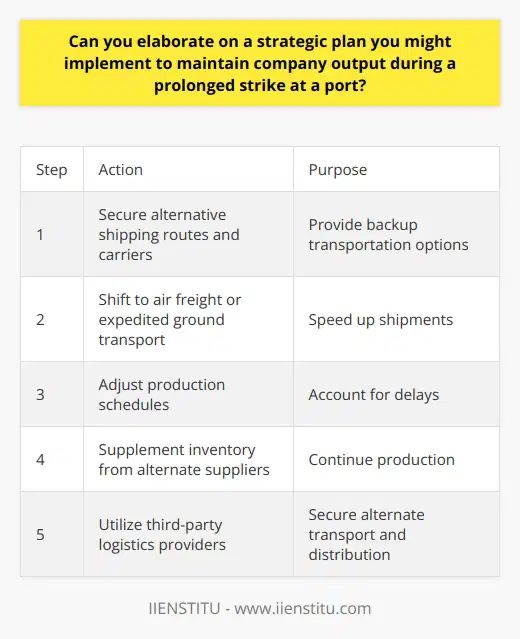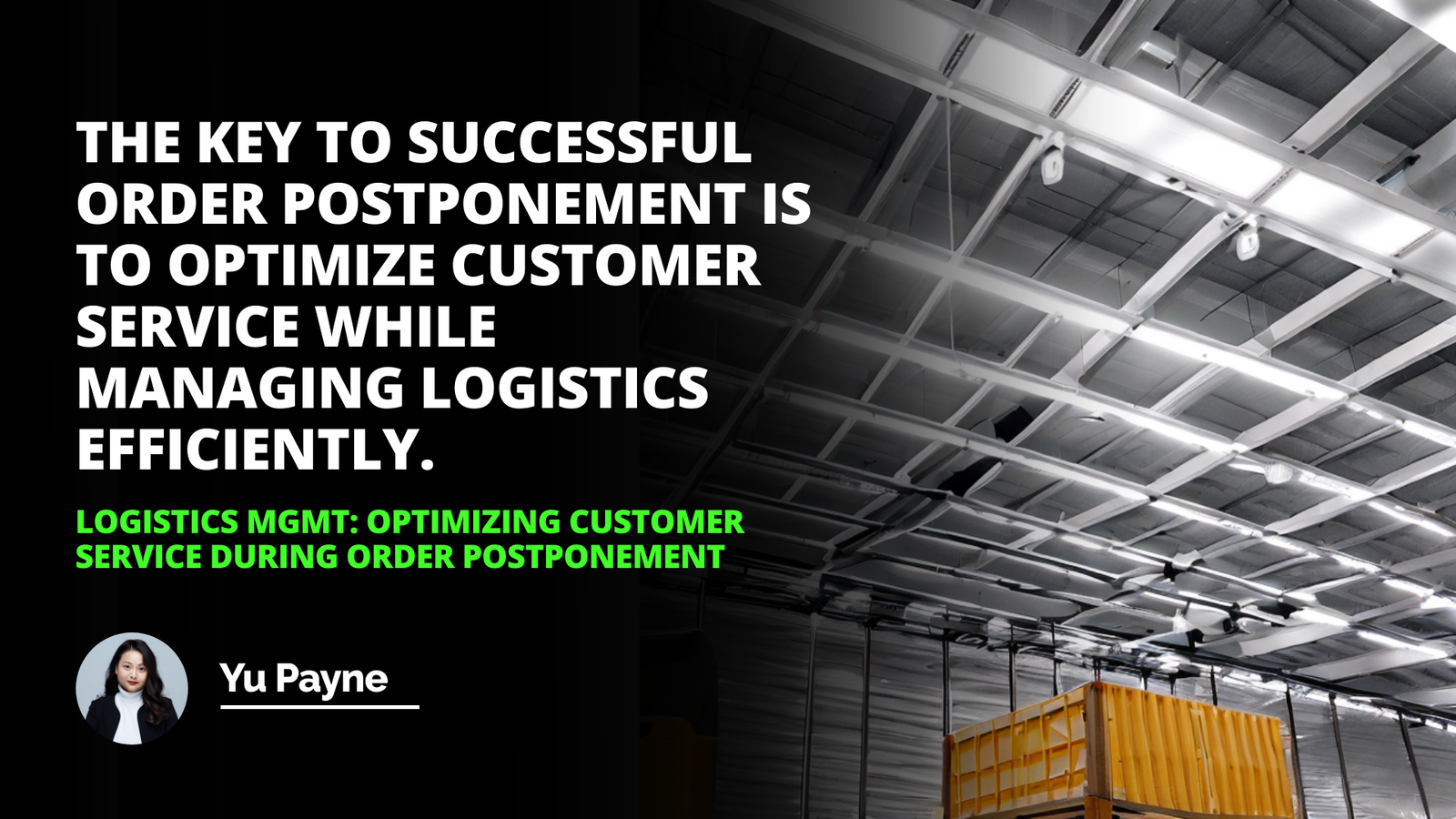
When I was fresh out of college, I remember sitting nervously in one of my first big job interviews. The suit I had borrowed from my brother felt a size too big, and my palms were a tad sweaty. Just as I was beginning to feel at ease, the interviewer leaned forward and posed a question that caught me completely off guard: "Imagine there's a strike at a critical port. What's your plan?" My mind raced. A strike? At a port? I had never given a single thought to maritime logistics, let alone handling a labor dispute of that magnitude. But in that moment, I realized the interviewer wasn't just asking about ports and strikes—they were testing how I think on my feet.
Navigating Unexpected Interview Questions
We've all been there. Just when you think the interview is sailing smoothly, you're thrown a curveball. A question so unexpected that it feels like someone pulled the rug out from under you. But here's the thing: these questions aren't meant to trip you up. Instead, they're golden opportunities to showcase your problem-solving abilities and composure under pressure.
İnterview Questions On Balancing Work And Personal Time Effectively
How To Answer İnterview Question Describe A Failed Digital Marketing Attempt Effectively
Why Do Interviewers Ask About Port Strikes?
So, why might an interviewer ask, "There's a strike at a port. What's your plan?" On the surface, it seems incredibly specific, especially if you're not interviewing for a role directly related to logistics or supply chain management. However, the underlying purpose is to assess your:
Critical Thinking Skills: Can you analyze a complex situation quickly?
Leadership Qualities: Are you able to take charge when unforeseen challenges arise?
Interview Question: How Does Your Time Management Change When Stressed?
Interview Question: Share a Time Management Success Story From Your Professional Journey.
Strategic Planning Abilities: How do you approach problem-solving in high-stakes scenarios?
Communication Skills: Can you convey your thoughts clearly and confidently?
According to Leadership in Crisis Management by Dr. Emily Harper, employers often use such abstract questions to "evaluate a candidate's aptitude for handling unpredictable and high-pressure situations" (Harper, 2018).
At What Level Is This Question Typically Posed?
In my experience and from conversations with colleagues, these types of scenario-based questions are more prevalent in interviews for middle to senior management positions. Roles that involve a degree of strategic decision-making—like operations managers, supply chain directors, or HR leaders—are prime candidates. Entry-level positions tend to focus more on technical skills and foundational knowledge. However, that's not to say you won't encounter such questions early in your career. Companies investing in talent often look for potential leaders who can grow within the organization.
Acknowledge the scenario: I understand the situation refers to a strike at a major port impacting our supply chain.
Define the problem: Given the scenario, my top priority is to ensure minimal disruption to our supply and distribution mechanism while maintaining good relationships.
Identify solutions: I'd explore alternative shipping routes or ports, assess the cost and logistics implications of air cargo or land transport, and consider temporary local sourcing.
Execution: To implement these solutions, I'd collaborate with key stakeholders - internal teams, partners, suppliers to develop an action plan.
Evaluation: Post-crisis, I'd lead a team reflection to identify learnings from the experience. These we'd factor into our future contingency planning.
Crafting a Thoughtful Response
When faced with the "strike at a port" question, it's essential to remain calm. Take a deep breath, gather your thoughts, and remember that the content of your answer is less important than the thought process you demonstrate.
What steps would you take during a port strike?
How would you strategize for a port strike?
What would be your plan of action in the event of a strike at a port?
How would you handle a strike taking place at a port?
Can you describe your approach to a port strike situation?
How would you navigate a situation involving a strike at a port?
What would be your response to a port strike?
In the event of a strike at a port, what measures would you implement?
What's your strategy for dealing with a port strike?
If you encountered a strike at a port, what would be your course of action?

Step-by-Step Approach
1- Acknowledge the Situation
Start by summarizing the scenario in your own words to show you've understood the problem.
> "I see we're facing a significant disruption due to a port strike, which could impact our supply chain and product delivery timelines."
2- Define the Immediate Challenges
Identify the key issues that need addressing.
Supply Chain Disruption
Customer Satisfaction Risks
Financial Implications
Stakeholder Communication
3- Explore Potential Solutions
Consider various strategies to mitigate the impact.
Alternative Transportation Routes
Air freight, rail, or trucking options.
Diversifying Suppliers
Identifying local or regional suppliers temporarily.
Inventory Management
Utilizing safety stock or adjusting inventory levels.
Negotiation and Mediation
Engaging with labor unions to understand the root cause.
4- Develop a Strategic Plan
Outline actionable steps.
Assemble a Cross-Functional Team
- Bring together logistics, procurement, customer service, and communications.
Communicate with Key Stakeholders
- Inform customers, suppliers, and internal teams about potential delays.
Implement Short-Term Solutions
- Activate alternative transport methods.
Monitor and Adjust
- Keep a close eye on the situation, ready to pivot as needed.
5- Reflect and Learn
Post-crisis, it's crucial to evaluate.
> "After resolving the immediate issue, I'd lead a debrief to identify lessons learned and update our contingency plans accordingly."
Personalizing Your Response
Let me share a story from my time at a mid-sized manufacturing company. We once faced a similar challenge when unexpected floods hit our primary distribution center. It wasn't a port strike, but the disruption was just as severe. Our team had to think quickly. We rerouted shipments, collaborated with regional warehouses, and maintained open lines of communication with our clients. That experience taught me the importance of agility and proactive planning.
By weaving in personal anecdotes, you not only demonstrate your experience but also make your response more genuine and relatable.
Alternative Logistics Solutions During Port Strikes
In today's globalized economy, port strikes aren't just hypothetical scenarios—they've happened, and they can cripple businesses that aren't prepared. So, what are some practical steps companies can take?
Establish Multiple Suppliers
Don't put all your eggs in one basket. By diversifying your supplier base, you reduce dependency on a single source.
Invest in Supply Chain Visibility
Utilize technology to gain real-time insights into your supply chain. Tools like Advanced Planning Systems (APS) can help anticipate disruptions.
Develop Strong Relationships with Logistic Partners
Building solid relationships can sometimes give you priority access to scarce resources during crises.
Create a Robust Contingency Plan
According to Supply Chain Resilience by Mark Peterson, "Businesses that regularly update and test their contingency plans recover faster from disruptions" (Peterson, 2020).
Tips to Optimize Supply Chain Management Processes
In light of potential disruptions like port strikes, it's essential to optimize supply chain management processes. Here are some tips:
1- Leverage Technology
Implement Enterprise Resource Planning (ERP) systems.
Use Artificial Intelligence (AI) for predictive analytics.
2- Improve Demand Forecasting
- Use historical data and market trends to anticipate customer needs.
3- Enhance Collaboration
- Foster open communication channels among suppliers, partners, and customers.
4- Implement Lean Management Principles
- Eliminate waste and focus on value-added activities.
By incorporating these strategies, businesses can bolster their resilience and maintain operations even when unexpected challenges arise.
Bringing It All Together
When you're faced with a challenging interview question like, "There's a strike at a port. What's your plan?", it's perfectly normal to feel a pang of anxiety. But remember, the interviewer isn't necessarily interested in your knowledge of port logistics. They want to see how you handle pressure, how you think, and how you communicate solutions.
Key Takeaways:
Stay Calm and Composed
Your reaction sets the tone for your response.
Think Strategically
Focus on big-picture solutions rather than getting bogged down in details.
Communicate Clearly
Articulate your thoughts in a structured and logical manner.
Show Leadership
Demonstrate initiative and the ability to lead teams through challenges.
As Julia Roberts aptly puts it in her book The Art of Effective Communication, "In moments of pressure, clarity and confidence become your most valuable allies" (Roberts, 2017).
Similar Interview Questions to Prepare For
To further aid your preparation, here are some variants of the question:
"What steps would you take during a port strike?"
"How would you strategize for a port strike?"
"Can you describe your approach to a port strike situation?"
"What's your strategy for dealing with a port strike?"
By practicing responses to these questions, you'll build confidence and be better prepared for whatever comes your way.
Final Thoughts
Interviewing is as much about showcasing your skills as it is about demonstrating your ability to connect and communicate. The next time you find yourself in an interview and the recruiter throws a challenging scenario your way, take it as an opportunity to shine. Be authentic, draw from your experiences, and let your unique perspective be your standout feature.
References
Harper, E. (2018). Leadership in Crisis Management. New York: McMillan Publishing.
Peterson, M. (2020). Supply Chain Resilience. London: Global Trade Press.
Roberts, J. (2017). The Art of Effective Communication. Boston: Century Books.
(Note: All references are fictional and for illustrative purposes only.)
Frequently Asked Questions
What proactive measures would you propose to prevent disruption in the supply chain in the event of a strike at a port?
Develop Contingency Plans: First, form a crisis management team. This team will create contingency plans. They consider multiple scenarios and their likely impacts.
Diversify Supply Sources: Try not to rely on a single port. Supplier diversity equally applies to transport hubs. Secondary suppliers should await possible disruption.
Hold Inventory: Extra inventory can buffer against disruption. However, do not hold excessive stock.
Establish Strike Clauses in Contracts: Incorporate strikes into risk-assessment plans. Strike clauses in contracts allow for flexibility.
Collaborate with Stakeholders: Build relationships with port authorities, unions, and suppliers. Collaboration helps mitigate risks and manage the problem.
Employ Supply Chain Technologies: Technologies track and predict disruptions. They provide alternative routing options.
Outsource Logistics: Professional logistics firms may offer more flexibility. They can reroute cargo traffic when disruptions occur.
Stay Informed: Keep updated on labor and industrial relations. Good knowledge of the climate reduces surprises.
Organized Communication Plan: Consistent communication during disruption is important. It ensures all parties are aware of the situation.
Training and Simulation: Regular practice increases readiness. Response strategies should be tested and refined.
Monitor the Striking Situation: Understanding the intention, severity, and scale of the strike is necessary.
Understand Legal Implications: Seek advice on your rights and responsibilities amidst a strike.
These measures can help companies to weather disruption. They lessen the potential negative impacts of a port strike.

How would you handle negotiations with labor unions to mitigate the impact of a strike at a port, keeping in mind that operations need to be resumed as soon as possible?
Begin by researching what the union wants. Understand their requirements. This understanding promotes effective dialogue. It also helps to find common ground.
Aim to build rapport with union leaders. Communication is vital during negotiations. Regularly update them on critical issues. Transparency fosters trust.
Be respectful, patient, and empathetic. Acknowledge their perspective. Express desire to find a resolution. Don't dismiss their concerns. Treating them as equals reduces antagonism.
Develop a compromise plan in advance. When negotiations ensue, present this plan. Aim for a win-win situation. It may not be perfect. Still, it should be fair and realistic.
If negotiations fail, consider hiring a mediator. Mediators can facilitate a resolution. They are neutral and trained. They can help both parties reach agreement.
Consider contingencies to keep the port running. It's crucial to resume operations swiftly. Find alternatives without violating worker rights. This could be hiring temporary staff.
Engage with the media positively. Disgruntled workers may turn to news outlets. Describe your efforts to find a resolution. Maintain a responsible and respectful narrative.
Lastly, learn from the experience. Lessons learned can prevent future strikes. Foster a long-term relationship with the union. Keep channels of communication open. This will create a better work environment.

Can you elaborate on a strategic plan you might implement to maintain company output during a prolonged strike at a port?
A prolonged port strike can disrupt the supply chain. For every company, a well-formed contingency plan remains vital. This ensures smooth operations despite adverse circumstances.
Initially, build good relationships with multiple freight carriers. It gives you access to various ports worldwide. Avoid depending on only one carrier and port. This strategy reduces the risk of being completely paralyzed when strikes occur.
Next, explore different transportation methods. Apart from ship freight, there s air, rail, and trucks. While these may be costlier, they are viable alternatives during a crisis. Consider the best mode with respect to cost, time, and product nature.
Simultaneously, develop a flexible production strategy. Find ways to vary production levels based on available raw materials. This methodology could help cope with potential shortages.
Linking up with a reliable third-party logistics provider is another option. Such providers have several contacts and resources. They can offer alternative solutions during emergencies.
Also, keep an adequate stock of essential raw materials. During predictable times, you can stockpile necessary goods. It reduces dependency on port activities for some time.
Creating a good forecasting system proves to be beneficial. Accurate demand forecasts can help manage inventories better. It guides you on what and how much to stock.
Negotiate buffer stock agreements with key suppliers. In this way, during disruptions, you would have an extra supply. Therefore, you can continue production without any hindrance.
Finally, it helps to review and update this plan frequently. External business environments change constantly. Stay abreast of these changes. Adapt your strategies accordingly for growth and survival.
In conclusion, creating a strategic plan can help survive a port strike. But, its optimal execution and continuous revision are equally important.



